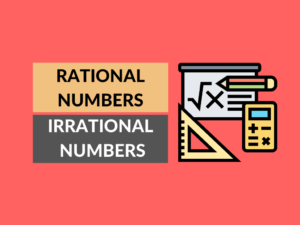Difference Between Arithmetic and Geometric Progression
Introduction:
An arithmetic progression and a geometric progression are two fundamental concepts in mathematics. Understanding the difference between the two is essential, as they have distinct characteristics and applications in various fields. In this article, we will explore the definitions, examples, uses, and differences between arithmetic and geometric progressions.
What is Arithmetic Progression?
An arithmetic progression, commonly known as an arithmetic sequence, is a sequence of numbers in which the difference between any two consecutive terms is constant. The constant difference is denoted by ‘d’ and is often called the common difference. Each term in the sequence can be obtained by adding the common difference to the previous term.
Examples of Arithmetic Progression:
1. 2, 4, 6, 8, 10, 12, 14… (Common difference = 2)
2. 10, 7, 4, 1, -2, -5, -8… (Common difference = -3)
Uses of Arithmetic Progression:
1. Arithmetic progressions are commonly used in financial calculations, such as compound interest and annuities.
2. They are also used in various mathematical and statistical models to represent linear relationships.
3. In computer programming, arithmetic progressions are frequently utilized in loop structures and series computations.
What is Geometric Progression?
A geometric progression, also known as a geometric sequence, is a sequence of numbers in which each term is obtained by multiplying the preceding term by a constant ratio. The common ratio is denoted by ‘r’ and remains the same throughout the sequence. Unlike arithmetic progressions, the ratios between consecutive terms in a geometric progression are constant.
Examples of Geometric Progression:
1. 3, 6, 12, 24, 48, 96… (Common ratio = 2)
2. 100, 50, 25, 12.5, 6.25, 3.125… (Common ratio = 0.5)
Uses of Geometric Progression:
1. Geometric progressions are often used in financial mathematics to calculate compound interest and analyze exponential growth.
2. They are utilized in the field of physics to model phenomena like radioactive decay and population growth.
3. Geometric progressions have practical applications in computer algorithms, such as geometric series summation and geometric mean calculations.
Differences Between Arithmetic and Geometric Progression:
| Difference Area | Arithmetic Progression | Geometric Progression |
|---|---|---|
| Definition | An arithmetic progression is a sequence with a constant difference between consecutive terms. | A geometric progression is a sequence with a constant ratio between consecutive terms. |
| Term Calculation | Each term is obtained by adding the common difference to the previous term. | Each term is obtained by multiplying the previous term by the common ratio. |
| Growth Rate | The growth rate is linear, as the difference between terms remains constant. | The growth rate is exponential, as each term is a multiple of the previous term. |
| Behavior | The terms in an arithmetic progression exhibit a linear pattern. | The terms in a geometric progression exhibit an exponential pattern. |
| Nature of Numbers | Arithmetic progressions can have any real number as a term. | Geometric progressions typically involve positive real numbers or fractions. |
| Infinite Series | An arithmetic progression can have an infinite series. | A geometric progression can have an infinite series only if the common ratio lies between -1 and 1 (exclusive). |
| Sum of Series | The sum of an arithmetic series depends on the number of terms and the values of the first and last term. | The sum of a geometric series depends on the number of terms, the first term, and the common ratio. |
| Variation of Terms | In an arithmetic progression, the difference between consecutive terms is always the same. | In a geometric progression, the ratios between consecutive terms are always the same. |
| Graph Representation | The graph of an arithmetic progression results in a straight line. | The graph of a geometric progression results in a curved line. |
| Derivative | The derivative of an arithmetic progression is constant. | The derivative of a geometric progression is not constant. |
Conclusion:
Arithmetic and geometric progressions differ in terms of their formulas, growth rates, behavior, nature of numbers, infinite series, sum of series, variation of terms, graph representation, and derivatives. Arithmetic progressions represent linear patterns and have a constant difference between terms, while geometric progressions exhibit exponential growth with a constant ratio between terms. Understanding these differences is crucial for applying the appropriate progression in different mathematical, financial, and scientific scenarios.
People Also Ask:
Q: What is the relationship between arithmetic and geometric progressions?
A: Arithmetic and geometric progressions are both types of sequences, but they differ in the way the terms are calculated. While arithmetic progressions have a constant difference between terms, geometric progressions have a constant ratio between terms.
Q: Can an arithmetic progression also be a geometric progression?
A: No, an arithmetic progression cannot be a geometric progression because the formulas and characteristics of the two progressions are fundamentally different. An arithmetic progression follows a linear pattern, whereas a geometric progression exhibits exponential growth.
Q: Can a geometric progression have negative terms?
A: Yes, a geometric progression can have negative terms. As long as the common ratio is negative, each term in the sequence will have a negative sign. However, it is more common to use positive real numbers or fractions in geometric progressions.
Q: Can an arithmetic progression have a common difference of zero?
A: Yes, an arithmetic progression can have a common difference of zero. In such cases, all terms in the sequence will be the same, resulting in a constant sequence.
Q: Is the concept of arithmetic progression limited to whole numbers or integers only?
A: No, arithmetic progressions can involve any real number as a term. The common difference can be an integer, fraction, or even a decimal value.


